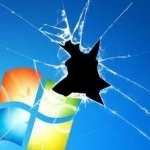System File Checks can be used to help resolve errors with your system – but its not perfect.
–PC Pitstop.
Using System File Checker to Fix Errors
by Richard Pedersen for Daves Computer Tips
We all know that Windows breaks from time to time. It is part of the daily chore. If you’ve never had a Windows installation break then I can only presume you’re a master or a magician. It could be that you’ve never used Windows in the first place. Say! That is a possibility– n’est-ce pas?
This is going to be short and sweet.
Opening an Administrator Command Box
Windows 8.x
1. Right-click the Start Button and choose Command Prompt (Admin)
Done…
Windows 7 and before…
To start a command prompt as an administrator
1. Click Start, click All Programs, and then click Accessories.
2. Right-click Command prompt, and then click Run as administrator.
3. If the User Account Control dialog box appears, confirm that the action it displays is what you want, and then click Continue.
To start a command prompt as an administrator (alternative method)
1. Click Start.
2. In the Start Search box, type cmd, and then press CTRL+SHIFT+ENTER.
3. If the User Account Control dialog box appears, confirm that the action it displays is what you want, and then click Continue.
Done… finally…
It doesn’t matter how many nay-sayers are out there. Windows 8 rocks! Nobody listens to me 🙁
The whole point of this painful exercise is to run a System File Check against the original files that are supposed to be integrated within your system. SFC does just that. The files against which they are compared is called the Component Store and is supposed to contain all the original and updated (Windows Updates) files required by the Operating System (OS), namely, Windows.
Read on…Article Continued Here
These excerpts are shared with permission from davescomputertips.com.




